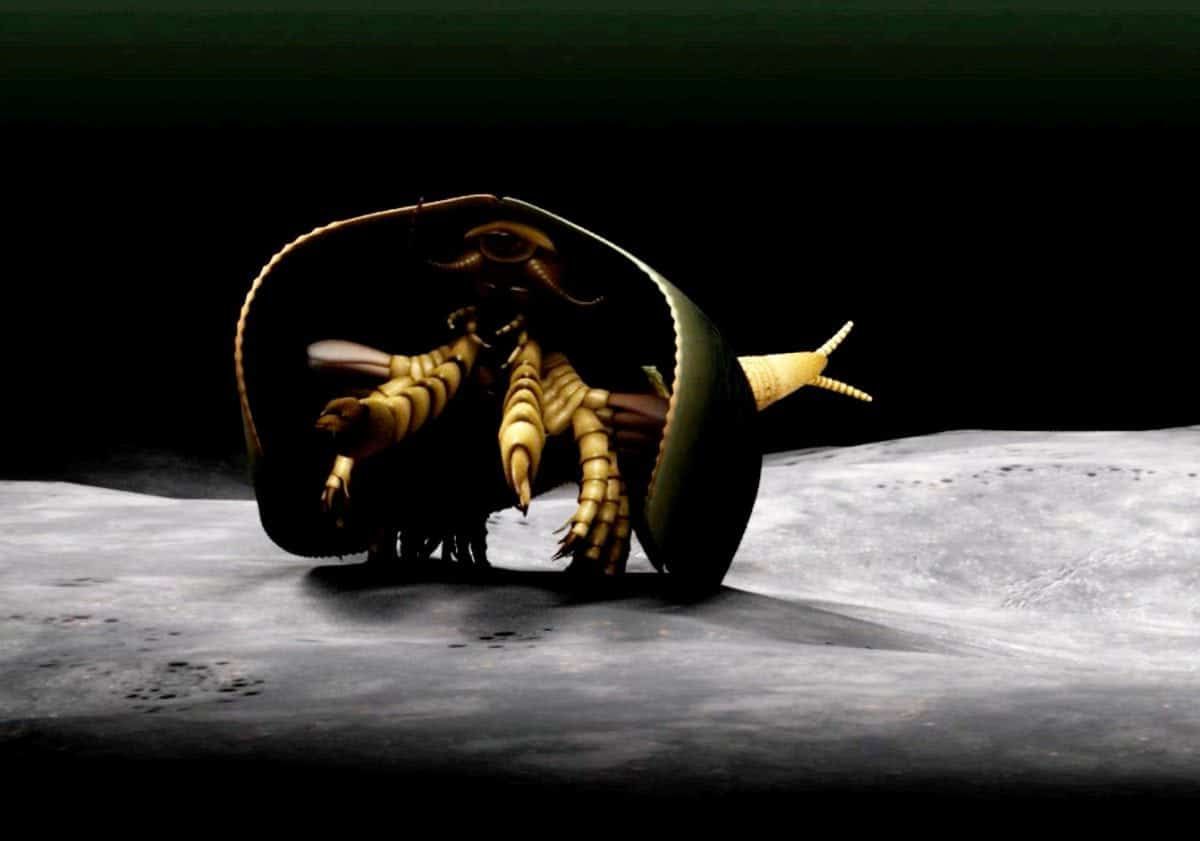
***EMBARGOED UNTIL 6PM BST, WED APR 26TH (17:00 GMT)*** A 507 million-year-old sea monster with can-opener like pincers has been identified for the first time. See NATIONAL story NNMONSTER. And the strange-looking creature could point to the origin of modern day millipedes, crabs and insects, according to paleontologists. Canadian scientists have uncovered the new fossil species that sheds light on the origin of mandibulates - the most abundant and diverse group of organisms on Earth, which includes flies, ants, crayfish and centipedes. The creature, named Tokummia katalepsis by the researchers, is a new and "exceptionally well-preserved" fossilised arthropod - a common group of invertebrate animals with segmented limbs and hardened exoskeletons. Tokummia documents for the first time in detail the anatomy of early "mandibulates", a sub-group of arthropods which possess a pair of specialised appendages known as mandibles, used to grasp, crush and cut their food. Study lead author Cedric Aria, a recent graduate of the PhD programme at the University of Toronto, said: "In spite of their colossal diversity today, the origin of mandibulates had largely remained a mystery.
A 507 million-year-old sea monster with can-opener like pincers has been identified for the first time.
And the strange-looking creature could point to the origin of modern day millipedes, crabs and insects, according to paleontologists.
Canadian scientists have uncovered the new fossil species that sheds light on the origin of mandibulates – the most abundant and diverse group of organisms on Earth, which includes flies, ants, crayfish and centipedes
The creature, named Tokummia katalepsis by the researchers, is a new and “exceptionally well-preserved” fossilised arthropod – a common group of invertebrate animals with segmented limbs and hardened exoskeletons.
Tokummia documents for the first time in detail the anatomy of early “mandibulates”, a sub-group of arthropods which possess a pair of specialised appendages known as mandibles, used to grasp, crush and cut their food.
Study lead author Cedric Aria, a recent graduate of the PhD programme at the University of Toronto, said: “In spite of their colossal diversity today, the origin of mandibulates had largely remained a mystery.
“Before now we’ve had only sparse hints at what the first arthropods with mandibles could have looked like, and no idea of what could have been the other key characteristics that triggered the unrivaled diversification of that group.”
He said Tokummia lived in a tropical sea teeming with life and was among the largest Cambrian predators, exceeding 10 cm in length fully extended.
An occasional swimmer, the researchers conclude its robust anterior legs made it a preferred bottom-dweller, like lobsters or mantis shrimps today.
Specimens came from 507 million-year-old sedimentary rocks near Marble Canyon in Kootenay National Park, British Columbia.
Study co-author Jean-Bernard Caron, an associate professor at the University of Toronto, said: “This spectacular new predator, one of the largest and best preserved soft-bodied arthropods from Marble Canyon, joins the ranks of many unusual marine creatures that lived during the Cambrian Explosion, a period of rapid evolutionary change starting about half a billion years ago when most major animal groups first emerged in the fossil record.”
He said analysis of several fossil specimens showed that Tokummia sported broad serrated mandibles as well as large but specialised anterior claws, called maxillipeds, which are typical features of modern mandibulates.
Dr Aria added: “The pincers of Tokummia are large, yet also delicate and complex, reminding us of the shape of a can opener, with their couple of terminal teeth on one claw, and the other claw being curved towards them.
“But we think they might have been too fragile to be handling shelly animals, and might have been better adapted to the capture of sizable soft prey items, perhaps hiding away in mud.
“Once torn apart by the spiny limb bases under the trunk, the mandibles would have served as a revolutionary tool to cut the flesh into small, easily digestible pieces.”
He said the body of Tokummia is made of more than 50 small segments covered by a broad two-piece shell-like structure called a bivalved carapace.
He said it also bears subdivided limb bases with tiny projections called endites, which can be found in the larvae of certain crustaceans and are now thought to have been critical innovations for the evolution of the various legs of mandibulates, and even for the mandibles themselves.
The many-segmented body is otherwise reminiscent of myriapods, a group that includes centipedes, millipedes, and their relatives.
Dr Aria said: “Tokummia also lacks the typical second antenna found in crustaceans, which illustrates a very surprising convergence with such terrestrial mandibulates.”
He said the creature was named after Tokumm Creek, which flows through Marble Canyon, and the Greek for “seizing”.
The findings were published in the journal Nature.